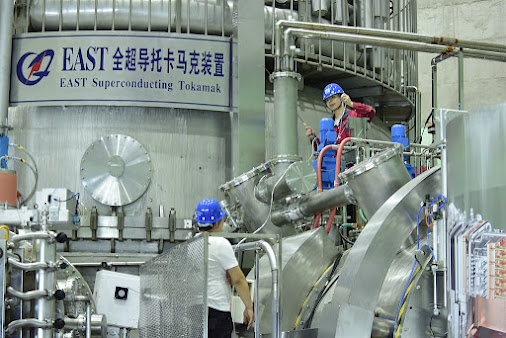1. Earth simulator to predict future crises
2. 3D printing to reinvent manufacturing
China's goals to develop high-quality computerised numerical control (CNC) machine tools and robots during the next three to five years depend heavily on additive manufacturing, often known as 3D printing.
During the launch of a Long March-5B rocket in May 2020, 3D printing of fiber-reinforced composite parts was successfully completed for the first time in space. As a result of China Aerospace Science and Industry Corporation's success in printing complex aircraft parts, the weight of aeroplanes was significantly reduced in 2021.
The industrial sector will undergo a total upheaval in the near future as a result of the use of 3D printing technology to make things of all sizes, from tiny prosthetic teeth to interstellar rockets.
3. Cosmic sensing networks to look deep into the
universe
4. Photonic chips to empower 'quantum computing superiority'
5. AI to revolutionize scientific research
6. AR glasses and the 'era of ubiquitous screens'
7. 'Artificial sun' holds promise for unlimited
clean energy
8. From carbon dioxide to artificial food
2.37 billion people didn't have access to enough food in the globe in 2020, according to data from the United Nations World Food Program.
Chinese researchers created the first artificial process for creating starch from carbon dioxide in September 2021, making history (CO2).
The Tianjin Institute of Industrial Biotechnology of the CAS has developed a novel strategy that enables starch production to be switched from traditional agricultural planting to industrial manufacture, opening up new opportunities for the development of fake food in the future.
According to the scientists, theoretically, a 1-cubic-meter bioreactor could produce as much starch annually as a third of an acre of maize, based on the existing technological parameters and an adequate energy supply.
If the The researchers predict that if the system's total cost can be reduced to a point where it is economically equivalent with agricultural planting in the future, it will conserve more than 90% of freshwater and arable land.
Also, the new strategy will aid in the fight against global warming and carbon neutrality.
9. New energy vehicles and green hydrogen production
The third-largest contributor to global greenhouse gas emissions is the transportation sector, and the aim of carbon neutrality depends on the transition of transportation vehicles to new energy sources.
In the near future, a range of new energy including electricity, hydrogen, and natural gas will be used to power not only ships and aircraft but also vehicles, ships, and planes. The hydrogen fuel cell among them offers the benefits of a long range and a quick refilling period.
The Dalian Institute of Chemical Physics under the CAS developed a megawatt-level hydrogen production system that uses proton exchange membrane (PEM) water electrolysis technology. This system achieved full capacity operation in September 2021, laying the technical groundwork for the widespread use of green hydrogen energy.
More hydrogen fuel will be available in the future.autos, ships, and aeroplanes, which will serve as vital complements to electric vehicles for mobility.
10. Ubiquitous computing
After more than a decade of high technology development, people's thoughts may wander freely in the metaverse while robots with chips acting as "brains," sensors acting as "eyes" and "noses," robotic hands, and algorithms with the correct ethics take care of the labour in the real world.
China will generally develop into a worldwide science and technology centre, a talent hotspot, and an exporter of high-tech during the course of the next ten years.












0 Comments